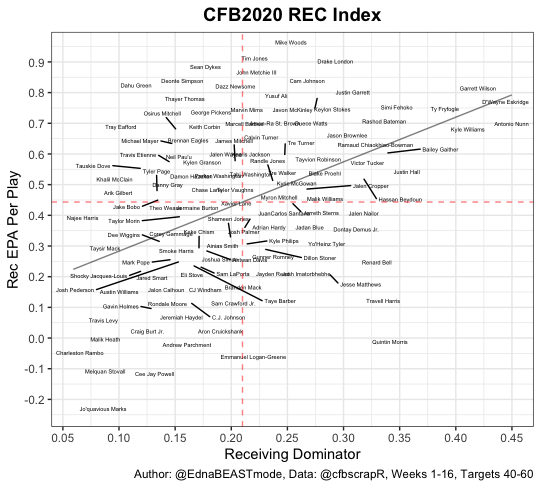Receiving EPA Per Play is our lens into efficiency. Receiving Dominator (yards only, rather than yards and touchdowns) is our lens into relative production for wide receivers. Receivers who are efficient with volume are the elite receivers we want to target for fantasy football.
First, lets apply this concept to 2019 college football data:
In the chart below, the upper-right quadrant contains both players who had high efficiency and production. We also want to peek over in the upper-left quadrant to understand what players had high efficiency, but could see increased production in the NFL.
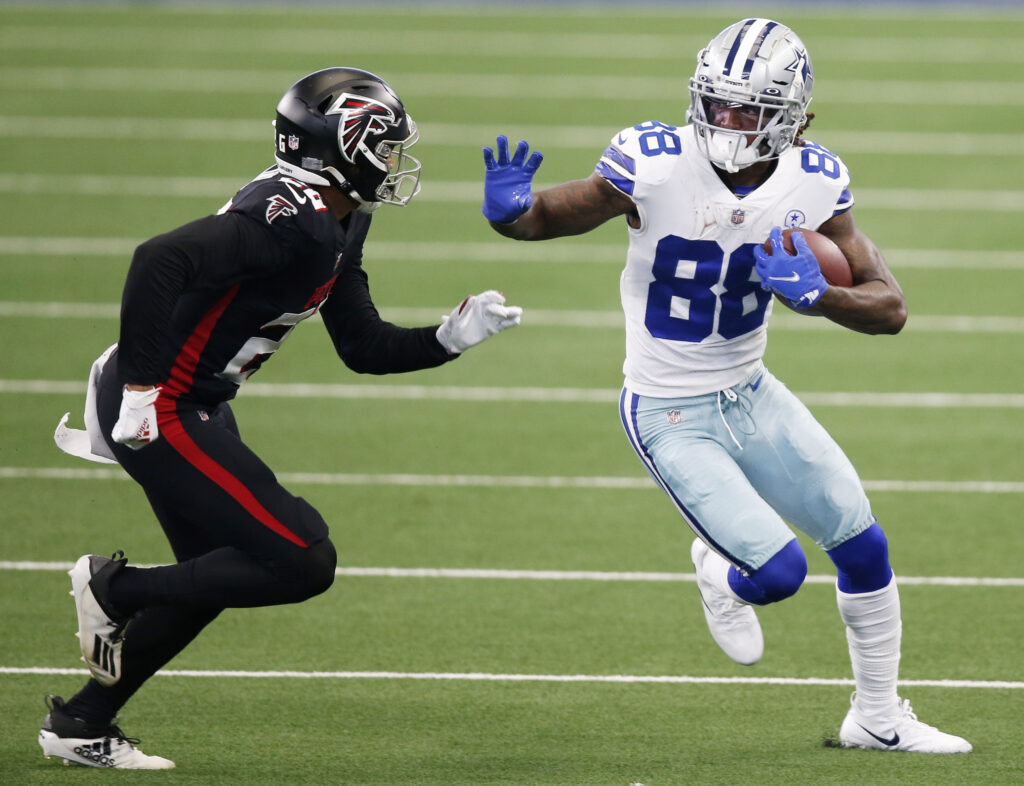
This list includes 2020 draft notables CeeDee Lamb, Devin Duvernay (a clear buy, by the way), Brandon Aiyuk, Michael Pittman Jr., Gabriel Davis, Laviska Shenault Jr., and Chase Claypool. Also in the upper-left, young star Justin Jefferson had an exceptional receiving EPA per play, and Jerry Jeudy had an above average receiving EPA per play.
The follow 2021 draft notables Ja’Marr Chase, Tamorrion Terry, DeVonta Smith, Rashod Bateman, Tutu Atwell, Tylan Wallace, Dyami Brown, and Warren Jackson are all in the upper-right quadrant for 2019, while Dazz Newsome and Amon-Ra St. Brown are in the upper-left quadrant.
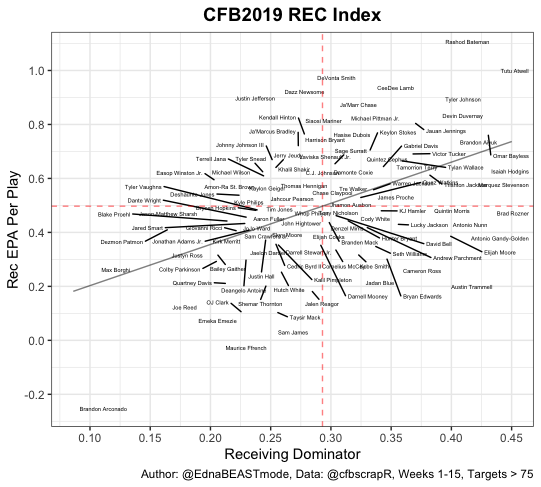
Now, lets take a look at the chart for the 2020 college football season for receivers with more than 60 targets:
The first player to point out is Treylon Burks, who checks all the boxes with an unofficial height and weight 6-3, 232. Two later breakout players are Marlon Williams and Dez Fitzpatrick, each who produced at a similar receiving EPA per play as in 2019, but crossed the average receiving dominator threshold as fourth-year players in 2020. Both also check the height-weight boxes for an “X receiver” in the NFL. One other name to highlight: Sam Pinckney is a third-year, small school player to monitor for devy purposes.
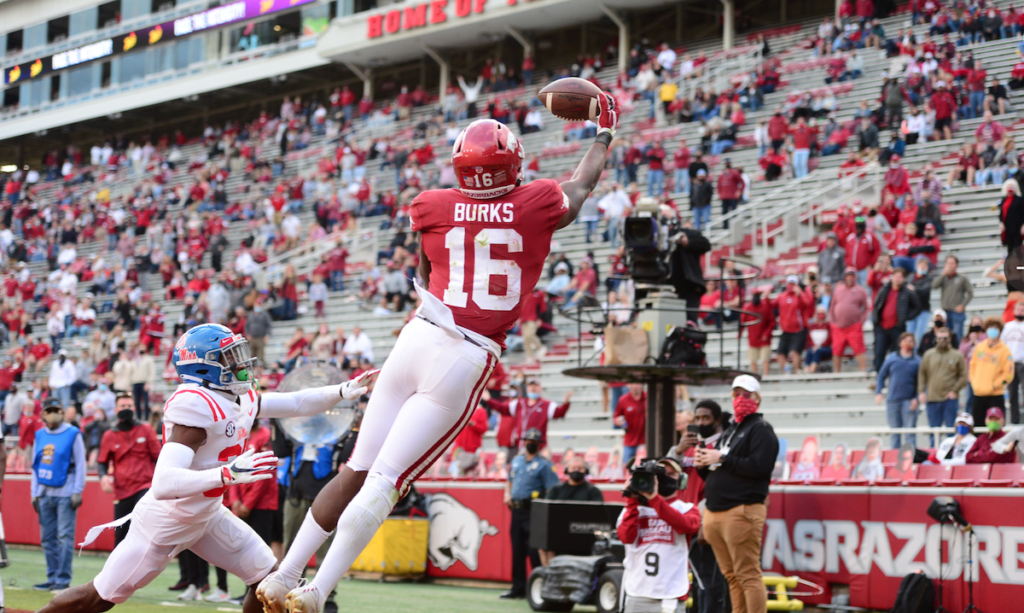
Players who don’t check the height-weight box:
Elijah Moore converted his targets at a much higher rate in 2020 versus 2019, which added efficiency to the volume he saw last year (40% dominator in 2019 and 34% in 2020).
Next, Jaivon Heiligh exploded this year, paired with Grayson McCall at quarterback. The issues with these players, as alluded to earlier: Moore measuring unofficially at 5-9 whereas Heiligh weighs unofficially at 190-pounds. We’ll need official measurements before we can move forward with either.
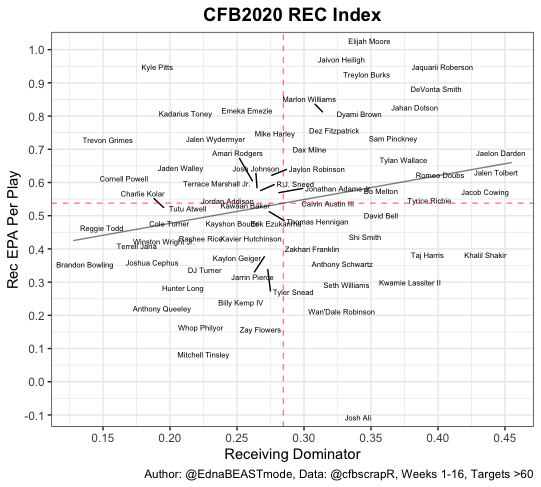
Next, we will take a deeper look at receivers between 40 and 60 targets; let’s start with the “top” options for the 2022 class.
Most lists I have seen contain Garrett Wilson, George Pickens, and David Bell. Drake London of Southern California should be in this conversation, and for me personally he sits at WR2 at the moment.
In 2019, London had a receiving EPA per play of 1.06, but sacrificed yards to fourth-year receiver Michael Pittman Jr. This year, London led the Trojans in both receiving EPA per play and receiving dominator.

Over the past two years, Bell (0.46 and 0.47) has been a complier of low-leveraged and low-upside yards, which has provided him with a high receiving dominator, but a low receiving EPA per play. Wilson (0.77), Pickens (0.77), and London (0.93) are at the top of that spectrum while also receiving volume.
My rankings would be: Pickens (WR1), London (WR2), Wilson (WR3), Bell (WR4), and then John Metchie III of Alabama (WR5).
Mike Woods, teammates with [Treylon] Burks (0.90), posted a 0.94 receiving EPA per play. Woods was the more efficient receiver, and Burks received the higher dominator rating while also only being a second-year player (Woods, a third-year himself). Simi Fehoko is another third-year players that we should be targeting in the later-rounds of upcoming devy drafts; both Woods and Fehoko check all the boxes we are looking for in a receiver.
